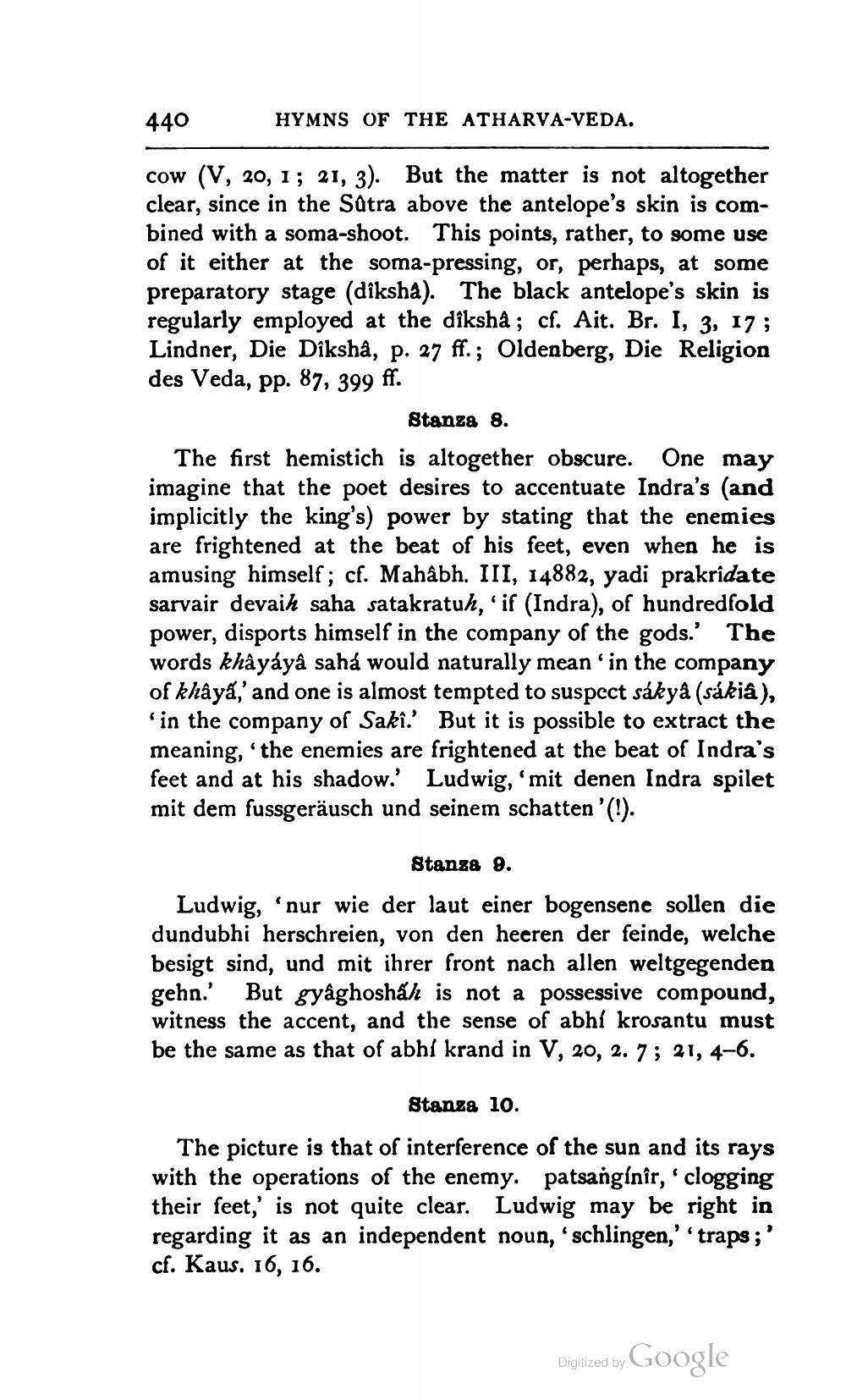________________
440
HYMNS OF THE ATHARVA-VEDA.
cow (V, 20, 1; 21, 3). But the matter is not altogether clear, since in the Satra above the antelope's skin is combined with a soma-shoot. This points, rather, to some use of it either at the soma-pressing, or, perhaps, at some preparatory stage (diksha). The black antelope's skin is regularly employed at the dikshå; cf. Ait. Br. I, 3, 17; Lindner, Die Diksha, p. 27 ff.; Oldenberg, Die Religion des Veda, pp. 87, 399 ff.
Stanza 8. The first hemistich is altogether obscure. One may imagine that the poet desires to accentuate Indra's (and implicitly the king's) power by stating that the enemies are frightened at the beat of his feet, even when he is amusing himself; cf. Mahâbh. III, 14882, yadi prakridate sarvair devaik saha satakratuh, 'if (Indra), of hundredfold power, disports himself in the company of the gods.' The words khâyáyå sahá would naturally mean in the company of khaya,' and one is almost tempted to suspect sákyà (sákia), 'in the company of Sakî.' But it is possible to extract the meaning, the enemies are frightened at the beat of Indra's feet and at his shadow. Ludwig, 'mit denen Indra spilet mit dem fussgeräusch und seinem schatten' (!).
Stanza 9.
Ludwig, 'nur wie der laut einer bogensene sollen die dundubhi herschreien, von den heeren der feinde, welche besigt sind, und mit ihrer front nach allen weltgegenden gehn. But gyaghoshah is not a possessive compound, witness the accent, and the sense of abhí krosantu must be the same as that of abhí krand in V, 20, 2. 7; 21, 4-6.
Stanza 10. The picture is that of interference of the sun and its rays with the operations of the enemy. patsanginîr,' clogging their feet,' is not quite clear. Ludwig may be right in regarding it as an independent noun, 'schlingen,'traps ;' cf. Kaus. 16, 16.
Digized by Google




